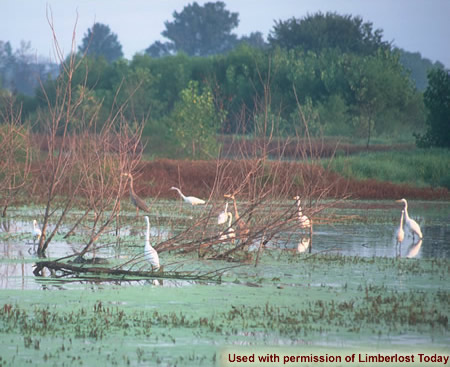


Stop 8: Wildlife
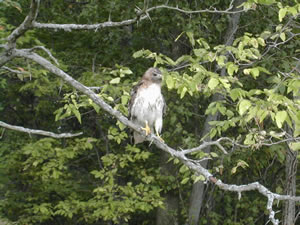 Red-tailed hawk (Buteo jamaicensis) |
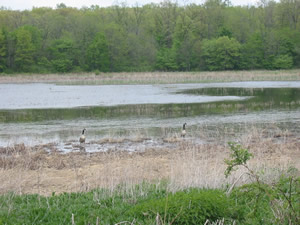 Canada geese (Branta canadensis) |
Birders have long known of the value of the Loblolly Marsh to birds. Not suprisingly, this location on the east side of the property is a popular habitat for year-round residents like great blue herons and red-tailed hawks, as well as many others that spend only part of the year there, like sandhill cranes, bitterns, egrets, and rails. However, birds are not the only residents of the wetland. Read below to learn what other creatures spend their time here.
Watch these short videos to see and hear the sounds of the Loblolly Marsh.
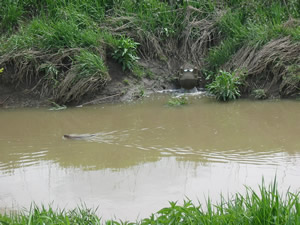 Other
residents of the swamp include a family of beavers. These playful and
fun-loving
creatures enjoy swimming in the Loblolly Ditch, looking
for their next meal on shore. However, not all of their time is spent
having fun and games. The creatures are also excellent lumberjacks.
They use the trees that they cut down to build lodges or dams.
Other
residents of the swamp include a family of beavers. These playful and
fun-loving
creatures enjoy swimming in the Loblolly Ditch, looking
for their next meal on shore. However, not all of their time is spent
having fun and games. The creatures are also excellent lumberjacks.
They use the trees that they cut down to build lodges or dams.
 Many
of the animals that live at the Loblolly Marsh are well
camouflaged and blend in well with their surroundings. Look at the picture
of a frog on the right.
Many
of the animals that live at the Loblolly Marsh are well
camouflaged and blend in well with their surroundings. Look at the picture
of a frog on the right.
Can you see him? Click on his body to get a close-up view of him. If you can't find him, click here for the close-up view.
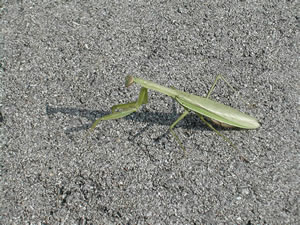 Many
insects call the Loblolly Marsh home as well--like this praying mantis
that is taking a stroll on Veronica's Trail.
This protected area is an excellent place for insects to live because
no insecticide is used
that could make them sick and cause them to die. There is also plenty
of space, food, and water for these important creatures.
Many
insects call the Loblolly Marsh home as well--like this praying mantis
that is taking a stroll on Veronica's Trail.
This protected area is an excellent place for insects to live because
no insecticide is used
that could make them sick and cause them to die. There is also plenty
of space, food, and water for these important creatures.
Many more animals live at the Loblolly Marsh than we viewed here. The signs of these creatures are all-around including animal tracks and scat.
American egrets (Casmerodius albas egretta) and Great blue heron (Ardea herodias)
The Loblolly Virtual Nature Trail was created as a part of the Our Land, Our Literature website.
